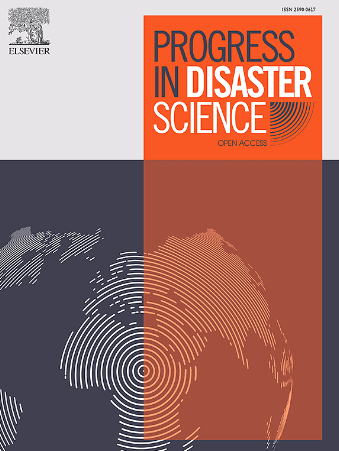Economic benefits of a rural distributed flood storage system
IF 3.8
Q3 ENVIRONMENTAL SCIENCES
引用次数: 0
Abstract
Rural distributed storage systems are green infrastructure that decentrally store flood water across the landscape to reduce downstream flood peaks. Despite growing understanding of their flow reduction potential, the evidence base for their economic risk reduction is thin. This study quantifies the economic benefits of distributed storage constructed in an agricultural region of Iowa. The system was financed through the US National Disaster Resilience Competition, and adopted a voluntary conservation approach that provided cost-share assistance to landowners. Our sequential analysis employed high-resolution modeling of watershed hydrology, flood exposure of buildings and crops, and economic risk. Construction and maintenance costs were included in scenario analyses of constructed storage structures and maximum potential structure buildout. The maximum benefit-cost ratio was 0.34, falling below the traditional threshold of 1.0 used for project selection in hazard mitigation. The results are highly sensitive to the geospatial accuracy of exposed buildings, and the flood-reduction benefits diminished at larger spatial scales. To improve risk reduction benefits, project siting should consider the location along the stream network and proximity to high-value properties. The inclusion of nonmonetary co-benefits such as improved water quality, landowner amenities, ecosystem services, and community collaboration would also strengthen the case for resilience cost-effectiveness.
农村分布式蓄洪系统的经济效益
农村分布式存储系统是一种绿色基础设施,它分散地将洪水存储在整个景观中,以减少下游洪水峰值。尽管人们对它们减少流量的潜力了解越来越多,但它们降低经济风险的证据基础却很薄弱。本研究量化了在爱荷华州农业地区建设分布式存储的经济效益。该系统由美国国家抗灾竞赛资助,并采用自愿保护方法,为土地所有者提供成本分担援助。我们的序列分析采用了高分辨率的流域水文模型、建筑物和农作物的洪水暴露以及经济风险。在对已建成的存储结构和最大可能的结构扩建进行情景分析时,包括了建造和维护成本。最大效益成本比为0.34,低于用于减灾项目选择的传统阈值1.0。研究结果对暴露建筑物的地理空间精度高度敏感,且在更大的空间尺度上,减洪效益降低。为了提高降低风险的效益,项目选址应考虑沿水系网络和靠近高价值物业的位置。包括非货币的共同利益,如改善水质、土地所有者便利设施、生态系统服务和社区合作,也将加强弹性成本效益的案例。
本文章由计算机程序翻译,如有差异,请以英文原文为准。
求助全文
约1分钟内获得全文
求助全文
来源期刊

Progress in Disaster Science
Social Sciences-Safety Research
CiteScore
14.60
自引率
3.20%
发文量
51
审稿时长
12 weeks
期刊介绍:
Progress in Disaster Science is a Gold Open Access journal focusing on integrating research and policy in disaster research, and publishes original research papers and invited viewpoint articles on disaster risk reduction; response; emergency management and recovery.
A key part of the Journal's Publication output will see key experts invited to assess and comment on the current trends in disaster research, as well as highlight key papers.
 求助内容:
求助内容: 应助结果提醒方式:
应助结果提醒方式:


